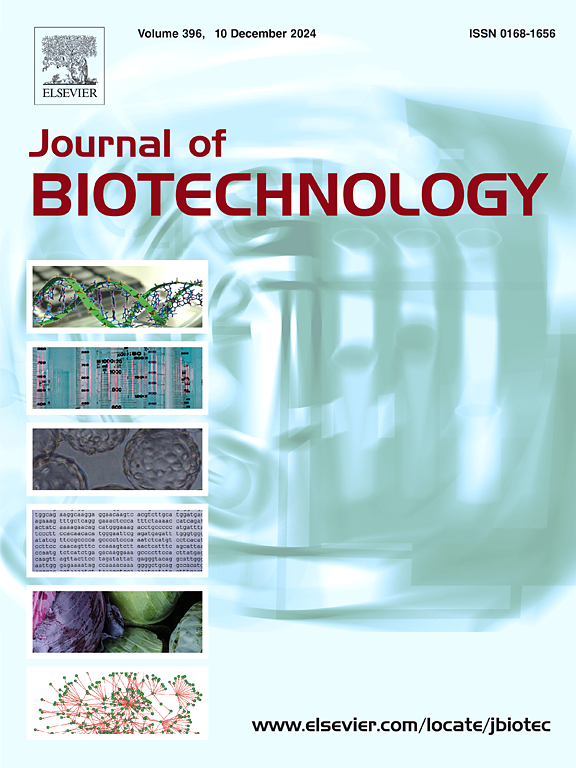A review on microbial metabolic engineering for the improvement of itaconic acid production
IF 3.9
2区 生物学
Q2 BIOTECHNOLOGY & APPLIED MICROBIOLOGY
引用次数: 0
Abstract
Itaconic acid (IA), also known as methylene-butanedioic acid, is one of the top 12 platform chemicals in the world and demand for it is growing worldwide. The itaconic acid molecule contains one reactive double bond and two carboxyl groups, endowing it with chemical reactivity. It is widely used in fields such as light industry, agriculture, energy, and medical applications. The recent progress in understanding the biosynthesis, the regulation and the cellular transport of itaconic acid has facilitated the optimisation of existing processes as well as the construction of new microbial platforms. However, there is still need for further optimisation to increase the space-time yield, to achieve higher final concentrations and to use a broader range of low cost sustainable raw materials. In this review article, we have summarized the current status of itaconic acid production by natural microbial strains, recent advances in research on genetically engineered modified strains, and further analyzed the gene clusters associated with itaconic acid biosynthesis in Aspergillus terreus, Ustilago maydis, as well as similar genetic clusters identified in A. niger. Genetic engineering and process development need to apply intelligent screening platforms to obtain as much information as possible in small scale so as to provide more detailed basic information and newer improvement ideas for subsequent research.
改善衣康酸生产的微生物代谢工程研究进展
衣康酸(IA),也被称为亚甲基丁二酸,是世界上12大平台化学品之一,全球对它的需求正在增长。衣康酸分子含有一个活性双键和两个羧基,使其具有化学活性。它广泛应用于轻工业、农业、能源和医疗等领域。衣康酸的生物合成、调控和细胞转运的最新进展促进了现有工艺的优化以及新的微生物平台的构建。然而,仍需要进一步优化,以提高时空产量,实现更高的最终浓度,并使用更广泛的低成本可持续原材料。本文综述了天然微生物菌株生产衣康酸的现状、基因工程修饰菌株的研究进展,并进一步分析了土曲霉、麦黑霉以及黑曲霉中与衣康酸生物合成相关的基因簇。基因工程和工艺开发需要应用智能筛选平台,在小尺度上获取尽可能多的信息,为后续研究提供更详细的基础信息和更新的改进思路。
本文章由计算机程序翻译,如有差异,请以英文原文为准。
求助全文
约1分钟内获得全文
求助全文
来源期刊

Journal of biotechnology
工程技术-生物工程与应用微生物
CiteScore
8.90
自引率
2.40%
发文量
190
审稿时长
45 days
期刊介绍:
The Journal of Biotechnology has an open access mirror journal, the Journal of Biotechnology: X, sharing the same aims and scope, editorial team, submission system and rigorous peer review.
The Journal provides a medium for the rapid publication of both full-length articles and short communications on novel and innovative aspects of biotechnology. The Journal will accept papers ranging from genetic or molecular biological positions to those covering biochemical, chemical or bioprocess engineering aspects as well as computer application of new software concepts, provided that in each case the material is directly relevant to biotechnological systems. Papers presenting information of a multidisciplinary nature that would not be suitable for publication in a journal devoted to a single discipline, are particularly welcome.
 求助内容:
求助内容: 应助结果提醒方式:
应助结果提醒方式:


